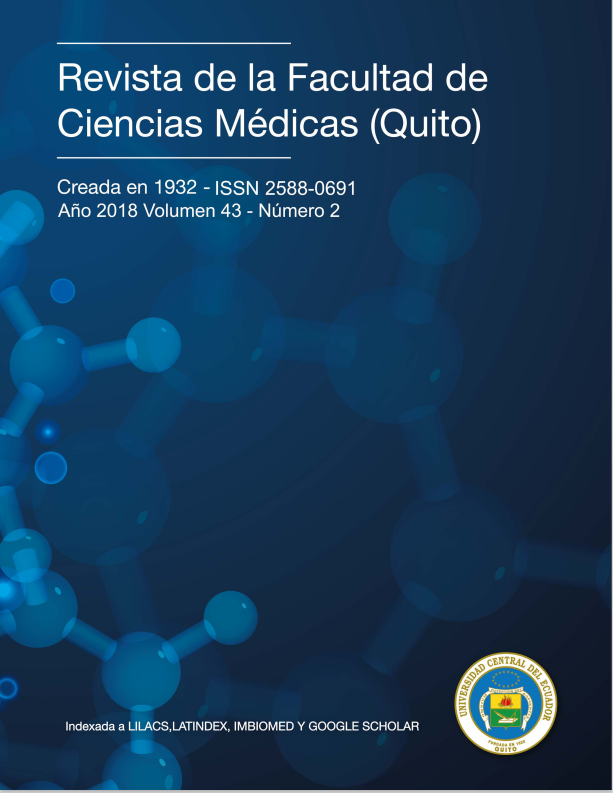Fijación, exactitud y nitidez. El registro fotográfico forense y su valor etnográfico visual en Medicina Legal
DOI:
https://doi.org/10.29166/rfcmq.v43i2.2833Keywords:
Forensic sciences, legal medicine, photography, cultural anthropologyAbstract
Background: Emergence, develpment and evolution of new technological forms in information and communication reorganize the current world towards a paradigm shift governed by visual registration. The latest devices opened a range of possibilities for visual records mediated by the ease and accessibility of the new technological tools, reaffirming the hegemony of the image in the validation and understanding of the world by man from the introduction of new models and cultural matrices In addition, they have affected the veracity of the facts, distorting and overflowing contemporary narratives and visuals from an ex-professed record of the surrounding reality. Objective: Anchored in this reality, it becomes a theoretical necessity to state what place forensic photography occupies as a disciplinary field in contemporary society and the visual ethnographic value it has for legal medicine, when the recording of the facts is carried out by specialized personal. Method: From the socio-critical paradigm that allows the historical-cultural approach to the forensic photographic registry and its ethnographic-visual value for Legal Medicine, enabling us to understand the place of this discipline in the new framework of visual relationships in contemporary society. Results: In spite of the new environment of possibilities of visual records, forensic photography maintains its prominence as a legitimate disciplinary field facilitating the true validation of the world. In this order, forensic photography is a powerful tool at the service of several branches of the social sciences that intersect from the veracity of this material support. Conclusions: The visual ethnographic analysis as a method to unravel the data recorded in the forensic photography, allows to obtain a host of valid and useful information for the resolution of the criminal facts. This aspect enables cross-linking with other specialties of a social and scientific nature. In the case of forensic medicine, it works perfectly as a material support for comparing and validating evidence found at the crime scene. Forensic images taken by the Police Department of Technical Eye Inspection (IOT) allow cross-references to facilitate the final deduction of the legal medical department.
Downloads
Metrics
References
Mirzoeff, N. Una introducción a la cultura visual. Barcelona: Ediciones científicas y técnicas; 1998.
El Telégrafo.com.ec [Internet]. Imbert. “vivimos en una época de hipervisibilidad”. El Telégrafo noticias del Ecuador y el mundo [actualización 28 de junio 2014; citado 27 de noviembre 2019]. Disponible en: https://www.eltelegrafo.com.ec/noticias/politica/3/imbert-vivimos-en-una-epoca-de-hipervisibilidad#
es.scribd.com. Antecedentes de la fotografía forense. Docx. Scribd [cargado por Jazmín Jiménez, el 25 de abril 2013; consultado 27 de noviembre 2019]. Disponible en: https://es.scribd.com/
doc/137882647/ANTECEDENTES-DE-LA-FOTOGRAFIA-FORENSE-docx
Leal Díez, F. Reseña fotográfica de detenidos. 2ed.- Madrid: Dirección general de la policía, 1983.
Sanders, Robert C. History of Forensic Imaging. Chapter 1. [Internet] 2010 [citado el 26 de noviembre del 2019] . ForenSic Scientist, Retired. Crimen Scene Photography. Disponible en: http://dx.doi.
org/10.1016/B978-0-12802764-6.00001-5
Hebrard J, Daoust F. History of Forensic Sciences. [Internet] 2013 [citado el 26 de noviembre del
Encyclopedia of Forensic Sciences, Second Edition. Disponible en: http://dx.doi.org/10.1016/
B978-o-12-382165-2.001191-4
Downloads
Published
How to Cite
Issue
Section
License
Copyright (c) 2018 Miraida Vilallonga Pons, Marlon Oviedo Ramirez

This work is licensed under a Creative Commons Attribution-NonCommercial-NoDerivatives 4.0 International License.










